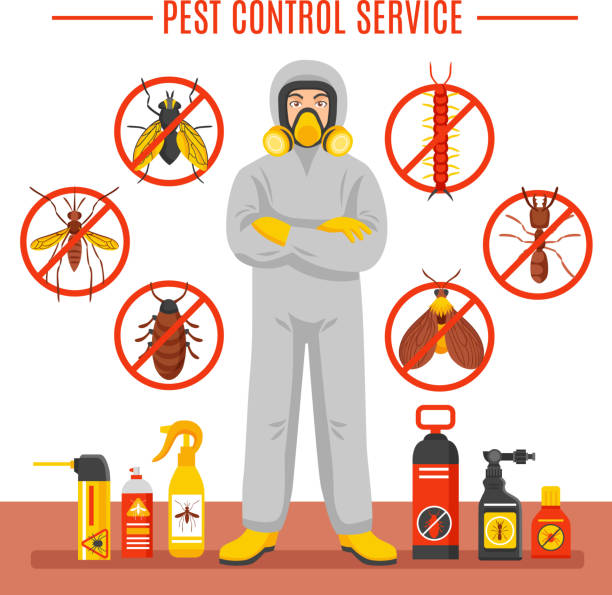Eco-Friendly Bug Control Approaches for Managing Wildlife in Urban Areas
Urban areas often discover themselves at the junction of human activity and wildlife, causing unique difficulties in parasite management. Eco-friendly techniques emphasize sustainable conjunction, employing methods such as environment modification and all-natural repellents to mitigate human-wildlife disputes. These strategies not only shield the atmosphere yet also boost area involvement in wildlife management. As urban populations continue to grow, understanding the dynamics of wildlife interactions becomes increasingly important. What ingenious techniques can be carried out to make sure both environmental balance and metropolitan security? Exploring this concern reveals a compelling landscape of potential solutions.
Comprehending Urban Wild Animals Dynamics
Comprehending Urban Wild animals Dynamics is important for establishing effective and eco-friendly parasite control methods. Urban areas are significantly becoming environments for various wild animals species, driven by variables such as environment fragmentation, food availability, and human advancement. Recognizing these characteristics enables a nuanced approach to pest administration that straightens with environmental principles.
Urban wildlife frequently consists of types such as raccoons, squirrels, and birds, which adjust to city settings, finding particular niches in eco-friendly rooms, parks, and even residential areas. Their visibility can cause conflicts with human beings, particularly when they manipulate human resources for food and sanctuary. Understanding the actions and ecological duties of these varieties notifies techniques that lessen unfavorable communications while advertising biodiversity.
In addition, recognizing the interdependencies within city communities aids in recognizing vital locations for environment conservation and restoration. This knowledge contributes to the advancement of incorporated parasite management (IPM) techniques that think about the environmental equilibrium, therefore decreasing reliance on dangerous chemicals. By cultivating conjunction in between humans and metropolitan wild animals, cities can produce healthier settings that profit both residents and local communities, leading the method for lasting city living.
All-natural Repellents and Deterrents
All-natural repellents and deterrents supply a sustainable alternative to conventional pest control techniques by harnessing the power of nature to keep unwanted types away. These eco-friendly options typically utilize plant-based active ingredients, crucial oils, and various other naturally occurring substances that discourage pests without hurting the atmosphere.
One effective natural repellent is peppermint oil, which is known to push back rodents and pests. Its solid fragrance is unpleasant to several bugs, making it a prominent choice for city setups. Vinegar and citrus peels can offer as deterrents, as their strong odors are commonly unattractive to different wildlife.
In addition, diatomaceous earth is a natural powder that can be spread out in areas vulnerable to parasite activity, effectively drying out and preventing insects without posturing dangers to non-target types. Garlic sprays and neem oil are acknowledged for their capacity to repel a wide range of insects, consisting of both bugs and larger wildlife.
Applying these natural repellents not only lowers reliance on chemical pesticides however additionally promotes a healthier city environment, cultivating a more well balanced conjunction in between humans and wildlife. By making use of these approaches, metropolitan locations can effectively handle bug populaces while minimizing environmental influence.
Habitat Modification Methods
Reliable environment modification methods play a crucial function in lasting insect monitoring by changing the environment to make it less conducive to pest invasions. By comprehending the eco-friendly characteristics of metropolitan locations, homeowner can apply critical adjustments that hinder insects while advertising biodiversity.
One more crucial strategy is to seal entry points in buildings. Checking and fixing splits in structures, wall surfaces, and windows can considerably minimize parasite access. Furthermore, developing physical barriers, such as fencings or plant barriers, can prevent wildlife movement into human-inhabited locations.
Integrated Parasite Administration Practices
Building upon environment adjustment techniques, incorporated bug management (IPM) techniques offer an all natural technique to controlling parasite populations while minimizing ecological impact. IPM incorporates various approaches, including organic, cultural, mechanical, and chemical controls, to attain efficient parasite administration.
Biological control entails the introduction of all-natural predators or bloodsuckers to decrease pest populaces. Cultural techniques, such as crop rotation and hygiene, interrupt pest life cycles and lessen their habitats - Pest Control. Mechanical controls, like traps and obstacles, supply immediate alleviation from bug pressures without chemical treatment
Chemical controls are made use of as a last option, concentrating on targeted applications that restrict damage to non-target species and the setting. The selection of eco-friendly chemicals, when required, is indispensable to the IPM structure. Additionally, checking pest populations and examining possible damages helps notify decision-making, making sure that treatments are prompt and efficient.
Community Involvement and Education And Learning

Moreover, community-led initiatives, such as community clean-up days and environment repair tasks, not just promote biodiversity however likewise enhance neighborhood connections. Pest Control. By encouraging locals to share their experiences and monitorings, communities can develop targeted techniques that resolve specific local bug problems
Including feedback from this hyperlink locals right into parasite management prepares allows a much more responsive and adaptive method to wildlife difficulties. Eventually, notified and engaged neighborhoods are essential to achieving lasting success in environmentally friendly insect control, resulting in healthier urban atmospheres that value both human and environmental needs.

Verdict
To conclude, environmentally friendly parasite control approaches deal sustainable remedies for handling city wildlife. By focusing on habitat alteration, utilizing all-natural repellents, and carrying out integrated parasite administration practices, neighborhoods can foster an unified conjunction with regional animals. Engaging homeowners through education and learning improves awareness and urges accountable wild animals interactions. Eventually, these techniques not just safeguard biodiversity but additionally advertise environmental health and wellness, ensuring city areas stay lively ecosystems where people and wildlife prosper with each other.
Comments on “Reduce infestations with expert Pest Control strategies that last.”